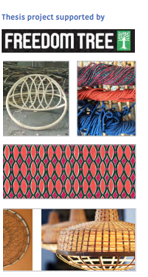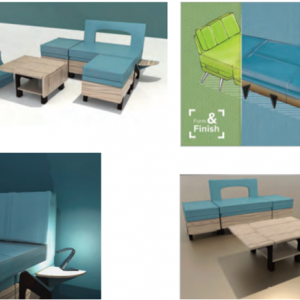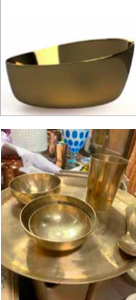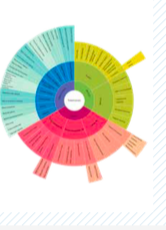You shop for so many things both online and offline but have you ever stumbled upon the thought of what goes behind in making these products available to you?
If you’re an innovative thinker with an inquisitive mind, this article is for you!
Let’s dive deep into the stages of the product development process.
Amongst the thousands of consumers who make purchases every day, a vast majority of them stay unaware of the tough and tedious process that goes into new product design development. Every product needs minor detailing and examining before they are in a position to be placed in the market for consumers to buy.
For an enterprise or an entrepreneur to correctly introduce a product into the marketplace, numerous problems need to be overcome:
- There must be an intensive knowledge of the marketplace.
- Always be aware of your niche audience or consumers.
- Studying competition to ensure that your product can stand out and meet all necessities, while also offering a delightful first-hand experience.

New product improvement examples continually contain distinctive steps and exceptional complications that the business or employer has to face; however, from their struggles, a brand new product development procedure may be drawn to help avoid a few common mistakes and make sure that your product can gain the right space and exposure in the market.
What is the New Product Design Process?
This is the term you’ll be hearing a lot in this article, so let’s understand the meaning of it!
The new product design process is a systematic guide for all budding companies, designers, and entrepreneurs to help them make and design a customer-oriented product that can perform remarkably in aggressive markets.
In simple terms, a DIY Guide with all the dos and don’ts!
In an attempt to explain new product development methods, many market professionals agree that there exist 7 or 8 tiers to the recent product design processes.
Note: This number can range primarily based on how detailed the technique is from one product to another
To discover and understand what are the 8 steps of the latest product development method, keep on reading!
Eight Stages of Product Design Process:
It is critical to remember that there may be no one popular product design process that works as one for all jobs. Each rendition of these will vary relying on the depth and detail that each design uncovers.
This article explains eight stages of the product development method and those are as follows:
-
Idea Generation:
The first level within the product development technique is idea generation. At this level, the company/designer comes up with many different and unique ideas primarily based on each internal and external research.
- Internal idea resources more often than not, seek advice from the in-residence research and development teams of the corporation.
- External assets confer with competitor improvements, the consumer’s wants, distributors, suppliers, and so forth. The enterprise thereby focuses on developing as many feasible ideas as possible.
-
Idea Screening:
The second step includes the screening of this regularly-large set of ideas that you brainstormed.
The primary objective of this stage is to recognize if the ideas are in step with the organisation’s aim and monetary dreams. The level specialises in filtering out ideas that might be poor or are not feasible and keeping those with top capability. This is to make certain that the agency no longer faces losses via moving ahead with fickle designs that do not promise returns. Like a keep or discard ideas game!
-
Concept Development and Testing:
The third stage of the product design improvement method is concept development and trials of the same. By now, good product ideas need to be advanced into distinctive product concepts which might be converted according to customer-oriented terms.
The concept should be made in a way to display how it will be far perceived by consumers and how it will potentially be recognized inside the marketplace, by identifying potential customers. This concept needs to then be examined by offering it to the target purchasers in a trial while their reaction and feedback must be taken into account.
-
Development of Marketing Strategy:
In this step, the organisation attempts to provide techniques to introduce and advertise a promising product into the market. The agency should consequently provide the charge, potential sales figures in addition to advertising and dispensing channels.
-
Business Analytics:
The product idea is placed through an analysis that checks to confirm projected income and revenue. Furthermore, it also examines difficulties and whether or not the manufacturing of the product is financially viable. Basically, trying to know if the product is worth it monetarily.
The agency’s targets are taken into consideration and if those are fulfilled, the product is moved on to the next step.
-
Product Development:
This is the step that comes after the corporation announces a product idea that aligns with the business goals of the enterprise. The research and development wing of the organisation then works on the product idea for months at a stretch, and even years in a few instances, to give you a working and functional prototype of the product concept.
-
Test Marketing:
This is the penultimate stage of the brand new product design process. It involves the testing of the product and its recommended advertising program in realistic market settings.
This stage gives intel into how the product might be introduced into the market, advertised, produced, packaged, allotted, and eventually offered to the customers, and consequently any optimizations if required can be made.
-
Commercialization:
The final step of the product development method is that of commercialization. Based on the facts accumulated in the whole test advertising process, the enterprise may either decide to go ahead with the launch of the product or position it as the backburner.
In case the go-ahead is given, the product is eventually delivered into the market and this system is referred to as commercialization. This step often results in high costs in terms of primary infrastructural investments as well as sales promotions and advertisements.

The fundamental aim of the complete product design development process is to generate valuable customer feedback and make certain that the product is well acquired in the market. More importantly, every business enterprise desires to correctly evaluate the form of commitment that the product manufacturing requires and whether or not this kind of dedication must be undertaken, based on the financial and administrative sources to be had at its disposal.
This 8-stage product design development process is in no way an absolute shape that makes or breaks a product. However, it offers a place to begin with for all businesses and designers, which might be seeking to introduce a new product into the market.
How can ISDI help:
In that curious mind, have you ever discovered a new idea that could prove to be a meaningful solution for modern-day problems?
If designing new products and enhancing the ones that you already have is your forte then study in detail Product Designing at ISDI School of Design and Innovation. In association with Parsons School of Design, ISDI has created a 4-year undergraduate degree program in product design and a 11 months postgraduate program in design, respectively.
This offers students a deeper understanding of diverse topics related to industrial and product design and equips them to work in the industry as product design professionals, consultants, or entrepreneurs. Students can move onto industrial roles, or work in a design studio. The courses are taught by industry experts in a world-class facility with excellent amenities.










